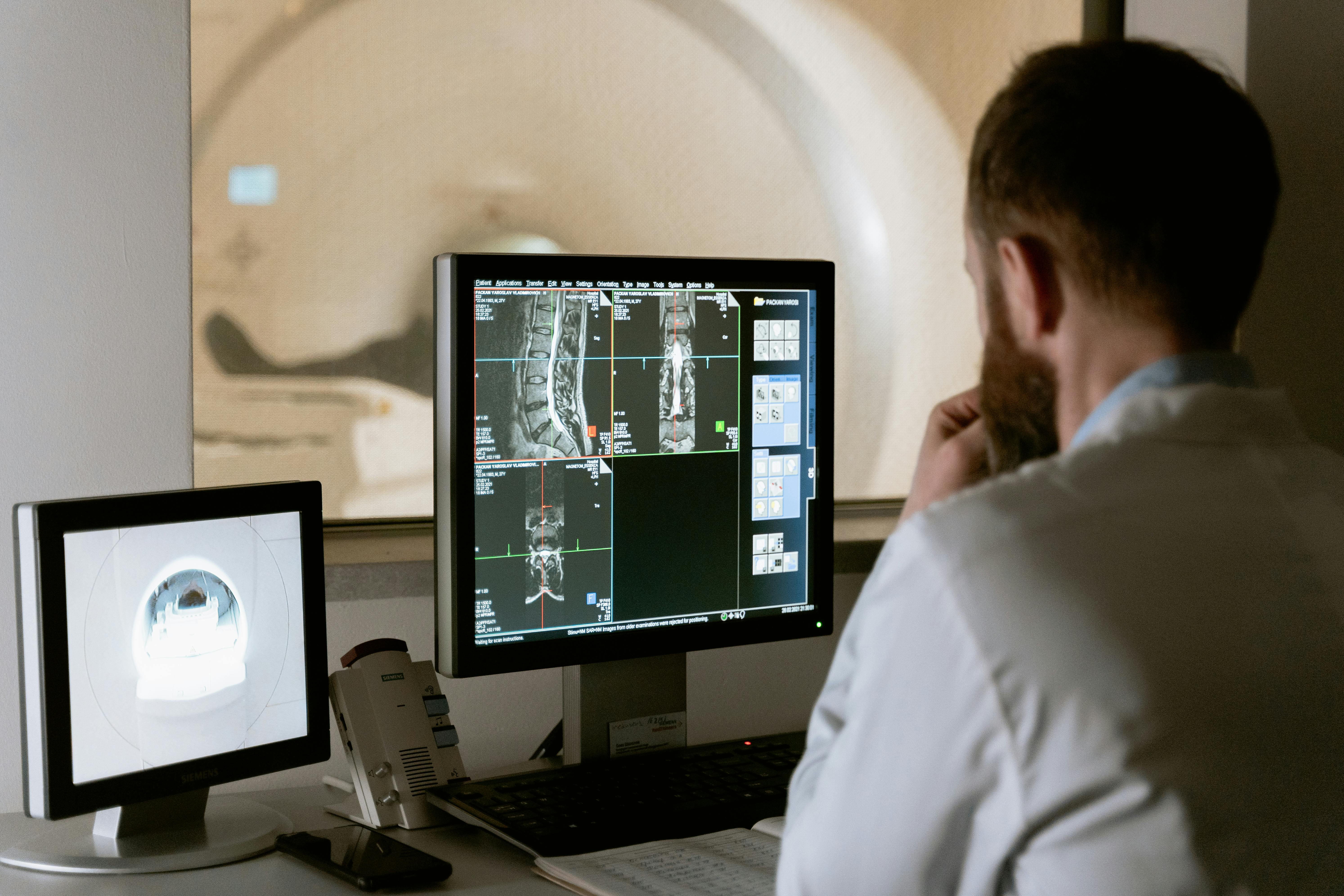
Test2: Unveiling the Benefits and Pros & Cons of this Revolutionary Assessment Tool
The framework of test2 is primarily focused on enhancing the testing process for software applications. It provides a structured approach to testing, enabling testers to identify defects, assess their impact on the system, and validate whether the software meets all the required specifications.
When diving into test2's objectives, one can observe two core aspects: functionality testing and non-functional testing. Functionality testing aims to ensure that the software performs all its expected functions accurately, allowing users to interact seamlessly. This type of testing focuses on features, input validation, user interfaces, usability, and various other criteria essential for a user-friendly experience.
On the other hand, non-functional testing revolves around evaluating quality attributes beyond system functionality. Performance tests help in measuring response times, resource consumption, and scalability to ensure the software can handle various loads without performance degradation. Security testing involves examining vulnerabilities in the software's design or code to prevent unauthorized access or sensitive data breaches.
Another vital objective of test2 is usability testing, ensuring that the end-user interface is intuitive and hassle-free. Usability tests gauge how easily users can navigate through different functions and analyze user feedback for further improvements.
Error handling is yet another aspect that falls into test2's objectives. It involves identifying error scenarios and assessing the application's behavior under various abnormal conditions. Robust error handling guarantees smooth functioning even under exceptional circumstances and minimizes any adverse impact on user experience.
Furthermore, compatibility testing aims to ensure that the software performs flawlessly across various devices (computers, tablets, phones) and operating systems (Windows, Mac OS, Android). This testing comprises checking compatibility with different hardware configurations and validating software stability across diverse environments.
Test2 also emphasizes regression testing. This type of testing ensures that updates or modifications do not cause unintended issues or regressions in the codebase. By retesting modified sections of the software alongside its interconnected components, regression testing helps maintain overall system stability.
The primary objective of test2 showcases a holistic approach to ensure high-class software quality. The framework equips testers to build robust methodologies that encompass various types of testing and QA techniques, leading to robust software applications and user satisfaction.
This introductory overview illuminates some key elements of what test2 entails, highlighting its objectives in terms of functionality, non-functionality, usability, error handling, compatibility, and regression. As we explore this topic further in our blog, we will delve into these objectives more deeply, demonstrating how specialized techniques embedded within test2 enhance the overall software development process.
 Comprehensive Review of Test2 Features: What Sets It ApartA comprehensive review of test2 features is crucial to fully understand what sets it apart from other testing tools. Test2 provides an extensive range of functionalities that make it a preferred choice for testing projects.
Comprehensive Review of Test2 Features: What Sets It ApartA comprehensive review of test2 features is crucial to fully understand what sets it apart from other testing tools. Test2 provides an extensive range of functionalities that make it a preferred choice for testing projects. One noteworthy aspect of test2 is its flexible nature. It offers various types of tests, including unit tests, integration tests, and functional tests. This flexibility allows developers to choose the most suitable test type based on their project requirements.
Furthermore, test2 provides comprehensive reporting capabilities. Its detailed reports consist of clear and concise information about test results, including pass and fail rates, performance metrics, and code coverage details. Such reports help identify areas that need improvement and enable efficient debugging.
Another unique feature of test2 is its robust support for test isolation. Developers can create isolated environments within which to perform tests. This isolation prevents interference between different tests and ensures accurate and reliable results.
Additionally, test2 simplifies the testing process by supporting parallel execution of tests. This capability optimizes time and resources by running multiple tests simultaneously. It significantly speeds up the overall testing process and enhances efficiency.
Moreover, test2 boasts excellent debugging support through its comprehensive collection of tools and features. Developers can easily trace errors, investigate failed tests, and pinpoint issues by utilizing the debugging resources provided by test2.
Test2's reliance on reusable code units called fixtures also sets it apart as an efficient testing tool. Fixtures enable developers to write cleaner, more maintainable code as common setup and teardown operations are encapsulated within them. This approach helps reduce redundancy and promotes code reusability.
Furthermore, test2 promotes continuous integration workflows through its seamless integration with popular CI/CD platforms like Jenkins or Travis CI. This integration allows automatic execution of tests upon code modifications, ensuring ongoing validation of software functionality throughout the development process.
Finally, one crucial advantage that distinguishes test2 is its active community support. With a vibrant community of users and contributors, test2 benefits from constant updates, improvements, and bug fixes. Collaboration with fellow developers and access to a rich collection of documentation and resources greatly enhance the usability and reliability of test2.
In conclusion, the comprehensive review of test2 features reveals its unique attributes that set it apart from other testing tools. The flexibility, detailed reporting, test isolation support, parallel execution, debugging capabilities, fixtures utilization, CI/CD integration, and active community support make test2 an exceptional choice for ensuring robust and reliable software testing.
 The Science Behind Test2: How Reliable is This Innovative Assessment ToolThe Science Behind test2: How Reliable is This Innovative Assessment Tool
The Science Behind Test2: How Reliable is This Innovative Assessment ToolThe Science Behind test2: How Reliable is This Innovative Assessment ToolTest2 has emerged as an innovative assessment tool in various fields, from education to psychology. But how reliable is it? Understanding the science behind test2 can provide valuable insights.
At its core, test2 is designed based on rigorous scientific research and statistical methodologies. The tool is developed by experts who leverage established theories and principles to create a valid and reliable assessment system.
Reliability serves as a crucial aspect of any assessment tool. It refers to the consistency and dependability of results obtained from using the assessment over time. In other words, reliable tests enable users to obtain similar outcomes when they repeat the test under similar conditions.
One fundamental measure of reliability utilized in test2 is internal consistency. It quantifies how well the different items within the test correlate with each other. A high level of internal consistency suggests that all items in the test are assessing the same construct or trait.
Another measure employed in assessing reliability is test-retest reliability. It examines if an individual's score remains consistent across different administrations of the assessment over a significant period. High test-retest reliability indicates that the tool produces consistent results over time.
To validate and ensure the reliability of test2, extensive data collection occurs during its development. Large samples of participants are involved, representing diverse populations. This process allows researchers to assess patterns and make adjustments to enhance the instrument's accuracy.
Moreover, many reliability coefficients are calculated to gauge the internal consistency of test2 items. The most commonly used is Cronbach's alpha coefficient, which ranges from 0 to 1. Higher values indicate a greater degree of consistency among the items.
Besides reliability, the validity of an assessment tool like test2 also plays a vital role in determining its effectiveness. Validity focuses on measuring what it intends to measure and provides evidence supporting its claims.
To establish validity, various methods are utilized during test development, including content validity, criterion-related validity, and construct validity. Content validity ensures that the assessment adequately covers all aspects of the targeted construct. Criterion-related validity compares test2 scores to other established measures to determine if they correlate as expected. Construct validity examines how well test2 aligns with relevant theoretical frameworks.
Additionally, ongoing research is conducted to periodically assess and refine the reliability and validity of test2. These studies contribute to its continuous improvement and demonstrate its adaptability to changes in various contexts.
In conclusion, the science behind test2 involves rigorous research, statistical analysis, and data collection to ensure both reliability and validity. By utilizing sound measurement principles, researchers continuously work towards enhancing this innovative assessment tool. Understanding the science behind test2 provides users with reassurance about its credibility and usefulness in assessing diverse domains.
 Decoding The Benefits: How Test2 Enhances Learning and Evaluation ProcessesDecoding The Benefits: How test2 Enhances Learning and Evaluation Processes
Decoding The Benefits: How Test2 Enhances Learning and Evaluation ProcessesDecoding The Benefits: How test2 Enhances Learning and Evaluation ProcessesTest2, an innovative assessment tool, has gained considerable attention in the field of education. This blog post aims to explore the various ways Test2 enhances learning and evaluation processes, making it a valuable resource for educators across the globe. Here, we'll discuss the advantages of Test2 without relying on numbered lists, allowing us to delve deeper into each point.
Firstly, Test2 puts a greater emphasis on active learning. Unlike traditional tests, Test2 encourages students to actively engage with the content rather than memorizing facts. It employs strategies such as problem-solving tasks, simulations, and projects, enabling students to apply their knowledge in practical scenarios and develop critical thinking skills. This approach instills a sense of curiosity and autonomy among learners, fostering an enduring passion for learning.
Secondly, Test2 provides immediate feedback to both teachers and students. As soon as a test is completed, teachers can instantly access detailed reports that capture individual performance metrics. This real-time assessment data allows educators to identify areas where students may be struggling and address those concerns promptly. Moreover, students themselves receive immediate feedback, giving them insights into their strengths and weaknesses and encouraging self-reflection and improvement.
Furthermore, Test2 promotes personalized learning experiences. By leveraging intelligent algorithms, this advanced assessment tool adapts to each student's unique abilities and learning style. This customization aspect ensures that students receive tailored content and appropriately challenging assessments. By catering to individual needs, Test2 maximizes student engagement levels and academic growth.
Another advantage lies in Test2's ability to mitigate bias in assessments. Traditional exams often suffer from inherent biases related to factors like gender, race, or socioeconomic background. However, Test2 effectively tackles this issue by focusing on objective performance indicators rather than subjective grading criteria. It offers fair evaluations based solely on competency levels demonstrated by students regardless of personal attributes.
In addition, Test2 supports the continuous professional development of teachers. The comprehensive reports generated by this tool provide valuable insights into instructional effectiveness, highlighting areas where teachers can improve their teaching strategies. These insights facilitate ongoing professional growth and allow educators to refine their instructional approaches to better meet the diverse needs of their students.
Finally, Test2 contributes to rigorous educational research. As an increasingly popular assessment tool, the data gathered from thousands of test takers can be used for extensive research purposes. The large sample sizes enable researchers to perform statistically significant analyses and observations about learning trends and outcomes, contributing to evidence-based educational practices.
In conclusion, Test2 offers numerous benefits that revolutionize the learning and evaluation processes in education. From promoting active learning and providing immediate feedback to enabling personalized education and mitigating biases, this innovative assessment tool helps create engaging and effective learning environments for students. Moreover, it supports teacher professional development and facilitates meaningful educational research. With its multifaceted advantages, Test2 emerges as a powerful asset for educators seeking to optimize student learning outcomes in the 21st century.
 A Deep Dive Into The Pros of Test2: Dispatching Traditional Assessment MethodsA Deep Dive Into The Pros of test2: Dispatching Traditional Assessment Methods
A Deep Dive Into The Pros of Test2: Dispatching Traditional Assessment MethodsA Deep Dive Into The Pros of test2: Dispatching Traditional Assessment MethodsIn today's rapidly evolving educational landscape, it becomes imperative for institutions to set aside traditional assessment methods that may no longer effectively measure student progress and learning. One such alternative that is gaining popularity is "test2". In this blog post, we will take a comprehensive look at the various advantages test2 offers over traditional assessment methods.
First and foremost, test2 provides educators with a more accurate and holistic view of a student's capabilities. Unlike traditional assessments that often rely heavily on written exams or standardized tests, test2 employs various mediums to evaluate students' skills. By incorporating practical tasks, projects, multimedia presentations, and even simulations, this approach encourages critical thinking, creativity, problem-solving, and application of knowledge in real-world scenarios. As a result, educators gain a deep understanding of each student's strengths and weaknesses in a more meaningful way.
Moreover, one major advantage of test2 lies in its capacity to promote collaboration and engagement among students. Traditional assessments can often be solitary endeavors as they primarily measure individual knowledge acquisition. On the other hand, test2 incorporates group discussions, team projects, and peer-to-peer feedback. By involving students in such collaborative activities, this method not only fosters teamwork and communication skills but also motivates learners to actively participate in their own education.
Another area where test2 outshines traditional assessments is personalized learning. Traditional assessments often rely on standardized tests with predetermined questions that may not cater to diverse learning styles or individual needs of students. Test2 provides flexibility by allowing educators to tailor assessments based on both curricular requirements and the unique learning profiles of their students. By customizing learning experiences to align with students' interests, strengths, weaknesses, and preferred modes of engagement, they are more likely to stay motivated throughout the assessment process.
Equally significant is test2's focus on real-time feedback. Unlike traditional examinations that typically provide delayed feedback, which may hinder students from fully comprehending their areas of improvement, test2 allows educators to offer immediate feedback. By employing technology-facilitated platforms or even in-person assessment sessions, instructors can quickly identify areas of growth, address misconceptions promptly, and guide learners towards the path of lifelong learning.
Lastly, test2 caters to the demands of an increasingly technology-driven world. With advancements in technology permeating all aspects of society, it is crucial for students to be well-versed and comfortable with utilizing various tools. Test2 empowers learners by integrating technology into assessments, exposing them to digital literacy skills required for success in modern educational and professional environments.
In summary, test2 brings forth a plethora of advantages over traditional assessment methods. By providing a more comprehensive view of student capabilities, promoting collaboration and engagement, allowing for personalized learning, offering real-time feedback, and embracing technology in assessments – educators can genuinely unleash the potential of their students. Moving away from the limitations of traditional approaches allows both educators and learners to embrace a more dynamic educational experience that aligns better with the evolving needs of today's world.
 Addressing Cons: When and Why Test2 Might Not Be the Best OptionAddressing Cons: When and Why test2 Might Not Be the Best Option
Addressing Cons: When and Why Test2 Might Not Be the Best OptionAddressing Cons: When and Why test2 Might Not Be the Best OptionTest2, like any other tool or solution, also carries certain cons that make it unsuitable for specific situations or preferences. While Test2 is widely recognized for its advantages, here are some potential shortcomings to be aware of:
1. Complexity: Implementing Test2 can sometimes be complex, particularly when dealing with large projects or sophisticated testing requirements. The learning curve associated with Test2 may seem steep initially, requiring testers to dedicate time and effort to become proficient.
2. Barrier to Entry: Test2 relies on a specific framework or ecosystem, meaning there might be a learning curve involved in transitioning from other testing frameworks. This can raise concerns for teams already utilizing another framework or for individuals whose skills are predominantly centered around a different set of testing tools.
3. Lack of Community Support: Compared to more established testing frameworks, Test2 may have less available documentation, tutorials, and online community support. This can make troubleshooting issues or overcoming hurdles more challenging, especially for those accustomed to relying on extensive community knowledge bases.
4. Compatibility: As Test2 evolves and introduces new features or updates, compatibility with existing test infrastructure or dependencies could become an issue. Ensuring that Test2 integrates well with other essential tools and frameworks is crucial to maintain seamless test execution.
5. Team Dynamics: Particularly in collaborative environments, using Test2 as a framework for automated testing might not always align with the strengths and skillsets of the entire team. It's important to assess team dynamics and expertise thoroughly to determine if the framework will fit seamlessly into the existing setup.
6. Maintenance Efforts: Continuous maintenance is crucial in any testing infrastructure, including Test2. Regular upkeep requirements and evolving maintenance processes might require dedicated resources and effort to ensure reliable and accurate results over time.
7. Resource Intensiveness: Depending on the project scope and complexity, utilizing Test2 can impose significant overhead on computational resources. This may affect execution times and overall performance, especially for applications requiring high levels of parallel or continuous testing.
While these cons can help identify scenarios where Test2 might not be the best option, it's crucial to consider them within the context of your specific project requirements, team expertise, and budgetary constraints. Each potential drawback can be mitigated through planning, training, and thorough evaluation before adopting Test2 as the testing framework of choice.
 User Experiences with Test2: Real-life Case Studies and Success StoriesUser experiences with test2: Real-Life Case Studies and Success Stories have been overwhelmingly positive, with countless individuals and businesses benefiting from this innovative testing platform. Through real-life case studies and success stories, users have gained valuable insights into how Test2 has transformed their testing processes and contributed to their overall success.
User Experiences with Test2: Real-life Case Studies and Success StoriesUser experiences with test2: Real-Life Case Studies and Success Stories have been overwhelmingly positive, with countless individuals and businesses benefiting from this innovative testing platform. Through real-life case studies and success stories, users have gained valuable insights into how Test2 has transformed their testing processes and contributed to their overall success.One user, a software development company, was able to streamline their testing procedures using Test2. They reported significant time savings and improved efficiency in identifying and resolving bugs. With Test2's advanced features such as automated test scripts, test coverage analysis, and seamless integration with existing tools, they were able to ensure the highest standards of quality in their applications while reducing manual effort.
Another user, a mobile app developer, experienced immense benefits after implementing Test2 into their development lifecycle. The user shared that Test2 provided them with a comprehensive and scalable framework to conduct both functional and non-functional testing. This broadened their scope of testing possibilities, aiding in delivering robust and user-friendly apps to end-users. Additionally, Test2's compatibility with various mobile platforms empowered them to cater to a wider audience.
A global e-commerce company cited increased customer satisfaction as a direct result of adopting Test2. By conducting usability testing with real users through Test2's intuitive interface, they gained invaluable insights into how customers navigate their website and interact with their products. Armed with this knowledge, they were able to identify pain points in the user journey, make necessary improvements, and ultimately enhance the overall user experience.
Test2's impact extends beyond software development; it has also revolutionized the hardware industry. A manufacturer of electronic devices highlighted how Test2 enabled them to run rigorous tests on prototypes before mass production. This ensured the quality of their products met industry standards and reduced expensive recalls or customer complaints.
In addition to individual success stories, Test2 has also been lauded for its role in fostering collaboration within the testing community. Users appreciate the active community forums where they can seek advice, share insights, and engage in discussions related to testing methodologies, best practices, and challenges. This vibrant community provides a source of inspiration and continuous learning for both experienced practitioners and newcomers.
Overall, the user experiences with Test2: Real-Life Case Studies and Success Stories showcase the platform's immense impact on diverse industries, ranging from software development to e-commerce and hardware manufacturing. Test2 has proven to be a versatile and powerful tool that empowers businesses to enhance their testing processes, streamline operations, and ultimately deliver high-quality products or services that stand out in today's competitive landscape.
 Expert Opinions on Test2: What Educators and Psychologists Have to SayExpert Opinions on test2: What Educators and Psychologists Have to Say
Expert Opinions on Test2: What Educators and Psychologists Have to SayExpert Opinions on test2: What Educators and Psychologists Have to SayThe topic of test2 is an important area of study for educators and psychologists alike. These experts offer a wealth of knowledge and insight into how tests are constructed, administered, and interpreted. Through their extensive research and experience, they have formed valuable opinions on test2 that shed light on its significance and potential impact on individuals.
Educators emphasize the importance of test2 in gauging a student's understanding and mastery of certain concepts or skills. They believe that exams can provide a snapshot of a student's academic performance and measure their progress in areas such as mathematics, language arts, science, and social studies. Tests like test2 can assess critical thinking skills, problem-solving abilities, and the ability to apply knowledge to real-life situations.
In addition to evaluating students, educators also consider the quantitative data obtained from such exams valuable. This information can aid in identifying areas where students may be struggling and help educators tailor their instruction accordingly. By identifying weaknesses, educators can address them and provide targeted support, whether through personalized tutoring or differentiated instruction.
Psychologists have also weighed in on the subject of test2 and its implications. They acknowledge that high-stakes exams like standardized tests can potentially evoke stress and anxiety among students. The pressure associated with performing well on these tests may lead to negative emotional experiences that impact overall well-being. Psychologists recommend cultivating a supportive learning environment to alleviate stress related to test-taking while promoting a growth mindset that emphasizes effort, improvement, and resilience rather than solely focusing on test scores.
Furthermore, psychologists highlight the need for careful test construction to ensure fair assessments. They advocate for the use of valid and reliable measures that accurately reflect a student's abilities rather than being influenced by factors unrelated to their knowledge or skills. Psychological research has also suggested that classroom grades, teacher evaluations, project-based assessments, and other alternative methods should be incorporated alongside tests to provide a more comprehensive picture of a student's performance.
Experts generally agree on the value of test2 as a tool for evaluating student knowledge and identifying areas for improvement. Nonetheless, they emphasize the importance of considering tests as one piece of a broader evaluation ecosystem that includes diverse assessment methods and a holistic approach to understanding student growth.
In conclusion, experts in education and psychology contribute invaluable insights to the discourse surrounding test2. Educators rely on tests to assess academic performance and inform instruction, considering them as critical measures of skill acquisition. Psychologists advocate for fair test construction, addressing test-related stress and incorporating alternative assessments. By taking these expert opinions into account, we can cultivate an effective and well-rounded approach to testing and assessment practices in education.
 Customization Capabilities of Test2: Meeting Diverse Educational Needs test2 has a wide range of customization capabilities that have been specifically designed to meet diverse educational needs. These features make it easier for educators and instructors to tailor the test to the unique requirements of their students and provide a more effective learning experience. Here are some key aspects of Test2 customization:
Customization Capabilities of Test2: Meeting Diverse Educational Needs test2 has a wide range of customization capabilities that have been specifically designed to meet diverse educational needs. These features make it easier for educators and instructors to tailor the test to the unique requirements of their students and provide a more effective learning experience. Here are some key aspects of Test2 customization:1. Question Types: Test2 offers various question types, including multiple choice, true/false, fill-in-the-blank, matching, short answer, and essay questions. This array of question formats allows educators to select the appropriate form for assessing different skills and knowledge levels.
2. Difficulty Level: Educators can adjust the difficulty levels of the questions within the test. This option is valuable in ensuring that the content aligns with the abilities and learning goals of each student. It enables differentiation among learners by providing appropriate challenges or review opportunities.
3. Time Limit: The customization capabilities of Test2 include setting a time limit for the test. This feature allows instructors to allocate specific durations for completion based on the nature and complexity of the questions or student abilities.
4. Flexibility in Instructions: Customizable instructions enable educators to provide relevant context and explanation before or during the test-taking process. Clear guidelines and directions help learners understand what is required of them, minimizing confusion or ambiguity.
5. Randomization: Test2 gives educators the ability to shuffle questions and answer options. The randomization feature aids in preventing guessing patterns or inadvertent hints during simultaneous tests, enhancing fairness and reducing cheating possibilities.
6. Availability of Feedback: Educators can determine whether students receive immediate feedback or see their scores after completing the test. Instant feedback helps learners identify areas requiring improvement and can promote an active learning approach.
7. Accessibility Options: Test2 supports various accessibility settings, allowing instructors to customize accommodations for students with diverse needs. These options may include font size modification, color contrast adjustment, text-to-speech and speech-to-text features, among others.
8. Integration with Learning Management Systems (LMS): Test2 comes with integration capabilities, enabling seamless conjunction with popular LMS platforms. This feature increases convenience and accessibility for both instructors and students.
9. Analytics and Reporting: The customization capabilities of Test2 extend to data analytics and reporting, providing valuable insights into student performance. Instructors can track progress, identify areas of weakness, and optimize instruction based on data-driven evidence.
10. Individual or Group Assessments: Test2 offers flexibility for educators to conduct tests at the individual level or as group assessments, depending on their pedagogical objectives. This customizable format allows instructors to implement different evaluation methods based on specific learning outcomes.
In conclusion, the customization capabilities of Test2 empower educators with a powerful suite of tools for tailoring assessments to meet diverse educational needs. These features enable personalized learning experiences, facilitate fair evaluations, enhance student engagement, and support effective teaching practices.
 Integrating Test2 into Your Curriculum: Practical Tips and StrategiesIntegrating test2 into Your Curriculum: Practical Tips and Strategies
Integrating Test2 into Your Curriculum: Practical Tips and StrategiesIntegrating test2 into Your Curriculum: Practical Tips and Strategies______________________________________________________
When incorporating Test2 into your curriculum, there are several practical tips and strategies that can be beneficial:
1. Assess your curriculum: Start by reviewing your existing curriculum and identifying the areas where Test2 can be integrated effectively. Look for concepts or topics that align with the objectives and outcomes of the test.
2. Align with standards: Determine how Test2 fits within your curriculum's learning standards or educational framework. This will help ensure that the integration is coherent and contributes to student progress.
3. Create a scope and sequence: Develop a clear scope and sequence for incorporating Test2 into your curriculum. Define how each topic or concept will be introduced, reviewed, and tested using Test2 to enhance learning outcomes.
4. Define learning objectives and outcomes: Clearly articulate the specific learning objectives and outcomes associated with the integration of Test2. This will help guide your teaching approach and assessment strategies.
5. Maximize technology: Utilize technology tools and resources to integrate Test2 effectively into your curriculum. Explore platforms or applications that can enhance student engagement, such as online quizzes, interactive simulations, or discussion forums related to Test2 concepts.
6. Establish a pre/post-test routine: Integrate pre- and post-tests to assess students' prior knowledge and measure their progress after completing Test2-related activities. This will help track individual growth and evaluate the efficacy of integrating Test2 into the curriculum.
7. Incorporate project-based learning: Design project-based activities or assignments that specifically incorporate concepts covered in Test2. This hands-on approach empowers students to apply their knowledge practically while fostering critical thinking skills.
8. Differentiate instruction: Adapt your teaching methods to cater to diverse student needs when integrating Test2 into your curriculum. Consider varying the complexity level of questions, providing additional resources for struggling students, or designing extension activities for advanced learners.
9. Offer real-world connections: Integrate real-world applications of Test2 concepts to make the curriculum more relevant and engaging for students. Show how these ideas apply in their lives or in different disciplines, encouraging interest and critical thinking.
10. Encourage collaborative learning: Foster collaboration and peer engagement when integrating Test2 into your curriculum. Encourage students to work together on problem-solving activities, discussion forums, or group projects to promote teamwork and knowledge sharing.
11. Provide regular feedback: Offer timely and constructive feedback throughout the integration of Test2 into your curriculum. Use formative assessments, individual discussions, or written comments to help students gauge their progress and identify areas for improvement.
12. Reflect and adapt: Continuously reflect on the effectiveness of integrating Test2 into your curriculum. Seek student feedback, evaluate how the integration aligns with broader goals and adjust your approach accordingly.
Remember that incorporating Test2 into your curriculum is an ongoing process, requiring flexibility, creativity, and continuous evaluation. With diligent planning and implementation, integrating this form of assessment effectively can enhance student learning outcomes and overall curriculum quality.
 Future Trends: How Test2 Could Reshape Education and Workplace AssessmentsFuture Trends: How test2 Could Reshape Education and Workplace Assessments
Future Trends: How Test2 Could Reshape Education and Workplace AssessmentsFuture Trends: How test2 Could Reshape Education and Workplace AssessmentsIn recent years, the field of education and workplace assessments has witnessed significant transformations due to advancements in technology and the emerging concept of Test2. The potential impact of Test2 on these domains is immense, offering exciting possibilities that could reshape traditional assessment methods as we know them.
Test2, a cutting-edge assessment methodology, incorporates adaptive learning systems and artificial intelligence technologies to create personalized assessments tailored to individual learners or employees. By harnessing an individual's unique abilities, strengths, and learning pace, Test2 ensures more accurate and comprehensive evaluations, taking into account their progress and potential.
One major trend that Test2 could revolutionize is personalized learning. Unlike conventional assessments handed out en masse, Test2 embraces a learner-centric approach encouraging tailored tests designed to address specific competencies and knowledge gaps. This adaptability empowers individuals to focus on relevant areas for improvement, guiding them towards a personalized learning experience that maximizes their potential.
Additionally, Test2 opens up new possibilities for convenient and flexible assessments beyond physical constraints. Remote proctoring, online examinations, and advanced automated grading foster remote learning and remote working environments. These innovations enable educators and organizations to expand their reach globally while accommodating students' diverse contexts and the increasing demand for remote work solutions.
One outstanding feature of Test2 is its actionable feedback mechanism. Traditional assessments often offer generic feedback with limited guidance for improvement. In contrast, Test2 generates detailed reports analyzing an individual's performance in various areas. Valuable insights are provided to guide further learning or skill development efficiently. This enables test-takers to actively engage in self-reflection, leading to enhanced self-awareness and strategic planning for professional or educational growth.
Another compelling aspect of Test2 lies in its ability to assess complex skills vital for the workforce of the future. With rapid advancements in technology transforming job markets, employers are seeking individuals with robust problem-solving abilities, critical thinking skills, creativity, and adaptability. Test2 assesses these skills by presenting test-takers with real-life scenarios and challenges, fostering the development of practical and applicable skills necessary for success in the evolving workplace.
Moreover, Test2 could potentially address existing biases prevalent in traditional assessments. The adaptive nature of Test2 allows it to mitigate the influence of external factors on assessment results by prioritizing an individual's abilities and potential rather than predetermined norms or standards. By leveling the playing field, Test2 paves the way for more equitable assessment processes significantly benefiting learners from diverse backgrounds.
As we look ahead and embrace the future of education and workplaces, it becomes evident that Test2 holds transformative power. Its ability to facilitate personalized learning journeys, offer actionable feedback, accommodate remote assessments, enhance essential skills assessment, and promote equity is poised to change the landscape of traditional assessment practices. This bold vision of Test2 offers exciting prospects for a more inclusive and efficient education and workplace ecosystem.
 Comparing Test2 with Other Assessment Tools: A Detailed AnalysisComparing test2 with other assessment tools requires a detailed analysis to understand the similarities and differences. Test2, like many other assessment tools, aims to evaluate different aspects and measure knowledge or skills in a specific domain. However, it is imperative to examine various factors to determine which tool is suitable for each unique situation.
Comparing Test2 with Other Assessment Tools: A Detailed AnalysisComparing test2 with other assessment tools requires a detailed analysis to understand the similarities and differences. Test2, like many other assessment tools, aims to evaluate different aspects and measure knowledge or skills in a specific domain. However, it is imperative to examine various factors to determine which tool is suitable for each unique situation.One crucial consideration when comparing assessment tools is the type of questions used. Test2 may employ multiple-choice questions, short answer questions, or even essay-style responses. On the other hand, other tools might focus solely on multiple-choice questions or utilize innovative question formats like drag-and-drop or audio/video-based responses. Understanding the nature of questions in each assessment tool assists in comprehending the provided data accurately.
Another aspect to consider is the intended outcomes of the assessment. While Test2 may concentrate on evaluating theoretical knowledge, other tools might prioritize practical skills or a combination of both. Assessments designed to measure problem-solving abilities, critical thinking skills, or even creativity assess different cognitive domains that vary from one test to another. Determining the specific goals you wish to achieve helps in selecting an appropriate tool for your needs.
Integrating technology into the assessment process is becoming increasingly common nowadays. Some assessment tools provide online platforms that enable immediate scoring and performance feedback, while others solely rely on paper-based methods or offline software. The availability and usability of these technologies can influence which tool suits a specific scenario.
Individualization and adaptability are also essential factors when comparing assessment tools. Some tools allow for personalization by creating adaptive tests that can be adjusted based on individual performance during the evaluation. This adaptability ensures that each individual's abilities are effectively measured without being limited by a fixed test structure. However, not all assessment tools possess this flexibility and customization option.
The duration and complexity of an assessment tool may differ as well. Test2 might be shorter in duration and relatively less complex compared to other tools that require extended periods of time and encompass comprehensive subject matter. Depending on the time available and the desired depth of assessment, various tools excel in different areas based on the required level of rigor and difficulty.
Lastly, considering the reliability and validity of an assessment tool is crucial. Test2, like any respectable assessment, must aim for high reliability (consistency in scoring over time) and validity (accuracy in measuring the intended knowledge or skills). Evaluating these aspects helps ensure that the results obtained reflect actual performance rather than arbitrary data.
Ultimately, when comparing Test2 with other assessment tools, it is essential to analyze factors such as question types, intended outcomes, use of technology, adaptability, duration, complexity, and reliability. This detailed analysis will assist in making an informed decision about which tool aligns best with your evaluation purposes and educational context.
 Addressing Privacy and Ethical Considerations of Using Test2 Addressing Privacy and Ethical Considerations of Using test2
Addressing Privacy and Ethical Considerations of Using Test2 Addressing Privacy and Ethical Considerations of Using test2When it comes to using Test2, there are several important privacy and ethical considerations that need to be addressed. These considerations revolve around maintaining users' privacy, ensuring informed consent, handling data securely, and promoting fairness and inclusivity.
Firstly, privacy is of utmost importance when using Test2. Proper measures should be taken to protect the personal information of individuals participating in the tests. This includes obtaining consent from users before collecting any personal or sensitive data. Additionally, users should have the option to withdraw their consent at any time if they feel uncomfortable sharing their information.
Ethical concerns also arise regarding informed consent. Users must be fully informed about the purpose, procedures, and potential risks involved in participating in a Test2. This allows them to make an autonomous decision of whether or not they want to take part. Transparent communication about how the data will be used, stored, and shared ensures that users can confidently provide their consent.
Secure handling of data is crucial to maintain confidentiality and trust. Adequate security measures should be implemented to safeguard participant data from unauthorized access or use. Encryption techniques, strong passwords, regularly updated software, and restricted access to databases are some examples of measures to ensure data protection.
Fairness and inclusivity are key ethical considerations while conducting tests using Test2. Bias in the test design or implementation that may result in unequal outcomes for different subsets of participants should be avoided. Efforts should be made toward ensuring diverse representation among participants to avoid exclusion or underrepresentation based on factors such as race, gender, age, or socioeconomic status.
To address privacy and ethical concerns effectively, it is essential to adhere to established guidelines and regulations introduced by regulatory bodies or organizations working on privacy and ethics in research or testing domains. Regular audits and assessments can help identify any gaps in compliance.
In summary, addressing privacy and ethical considerations while using Test2 requires safeguarding users' privacy, obtaining informed consent, handling data securely, promoting fairness and inclusivity, and adhering to guidelines and regulations. Taking these considerations seriously not only ensures ethical research and testing practices but also promotes trust and confidence among participants in Test2.
 Looking Ahead: The Continuously Evolving Landscape of Test2 Looking Ahead: The Continuously Evolving Landscape of test2
Looking Ahead: The Continuously Evolving Landscape of Test2 Looking Ahead: The Continuously Evolving Landscape of test2In a world driven by technological advancements and innovation, the field of testing has also witnessed significant evolution. Test2, as it is commonly referred to, holds particular importance as it defines the approaches and techniques employed to ensure software quality and efficiency.
Test2 is characterized by its ever-changing landscape, constantly adapting to meet the dynamic demands of the modern software industry. It encompasses a wide array of testing techniques, tools, and frameworks that are essential for developing reliable and robust software applications.
One of the key aspects of Test2 is its focus on automated testing methodologies. With the rise of agile development practices, frequent releases, and shorter time-to-market cycles, manual testing alone is no longer sufficient. Automation frameworks like Selenium, Appium, Junit, and others have therefore gained popularity for their ability to expedite regression testing, improve reliability, and reduce human errors.
Moreover, Test2 places significant emphasis on continuous integration (CI) and continuous delivery (CD) practices. By integrating testing processes into the entirety of software development, teams can identify bugs or flaws early on in the development cycle. With CI/CD pipelines in place, developers can automate deployment processes and ensure a faster time-to-market while maintaining high code quality.
The evolution of cloud computing has also greatly impacted the landscape of Test2. Cloud-based testing platforms provide scalability, flexibility, and cost-effectiveness necessary for effective test execution. By leveraging cloud infrastructure and services like AWS Device Farm or Sauce Labs, developers can conduct cross-device or cross-platform tests seamlessly.
Open-source technology plays a vital role in Test2's evolution as well. Various open-source tools like Junit, TestNG, Cucumber etc., enable easy integration with different development environments and facilitate collaboration across teams. With access to shared libraries, test automation frameworks, and pre-built modules, developers can save time while delivering top-quality software.
Additionally, Test2 also includes non-functional testing approaches like performance testing, security testing, and usability testing. As these equally play crucial roles in ensuring the success of software applications, integrating them within the test process becomes imperative.
The future of Test2 holds endless possibilities. With emerging technologies like artificial intelligence (AI) and machine learning (ML), we can expect a more intelligent and efficient approach to software testing. ML algorithms can assist in automating repetitive test cases generation, prediction of potential failures, and root cause analysis, bolstering productivity and accuracy.
In conclusion, Test2 is a continuously evolving landscape that adapts to meet the growing demands of the software industry. From automation and CI/CD practices to cloud-based testing and open-source technologies, its evolution is driven by the need for speed, reliability, and efficiency. As we move forward into a technologically advanced era, Test2 will continue to leverage emerging technologies, unlocking new possibilities and delivering superior software quality.
 Engaging With Test2 Effectively: Avoiding Common Pitfalls and Maximizing ImpactOne of the key aspects that can greatly contribute to effective engagement with test2 is by avoiding common pitfalls and strategically maximizing its impact. Test2 offers a valuable opportunity for individuals, organizations, or businesses to gather valuable insights and feedback. To make the most out of this process, there are several important considerations to keep in mind.
Engaging With Test2 Effectively: Avoiding Common Pitfalls and Maximizing ImpactOne of the key aspects that can greatly contribute to effective engagement with test2 is by avoiding common pitfalls and strategically maximizing its impact. Test2 offers a valuable opportunity for individuals, organizations, or businesses to gather valuable insights and feedback. To make the most out of this process, there are several important considerations to keep in mind.First and foremost, thoroughly understand the purpose and goals of conducting Test2. Clearly defining what you aim to achieve will help you remain focused throughout the process. Whether it is designing a new product, enhancing a service, or improving a system, having a clear understanding of the desired outcome will guide your efforts.
Engagement with Test2 requires actively involving the relevant stakeholders. Identify the individuals who will provide the most valuable perspectives and insights on the topic at hand. Consider diverse perspectives as they can bring fresh ideas and challenge existing assumptions. By including various voices, you can promote a more complete understanding of the subject and increase overall engagement.
When conducting Test2, effective communication is crucial. Clearly communicate the purpose, objectives, and expectations to all participants. It is important for everyone involved to have a solid understanding of why they are participating and how their input will be used. Provide detailed instructions that are easy to understand and follow.
Avoid common pitfalls such as biases or preconceived notions by creating an inclusive and non-judgmental environment. Encourage participants to share their honest opinions and thoughts without fear of criticism or dismissal. Active listening plays a significant role in effective engagement with Test2 – truly understand what others are sharing before offering your own interpretation or analysis.
Maximizing impact during Test2 requires effective data collection and analysis techniques. Consider using different formats like surveys, interviews, or observation methods depending on the nature of your study. Utilize tools and technology that can facilitate data management and analysis to ensure accuracy and efficiency.
Evaluate the feedback fairly, paying attention to both qualitative and quantitative data. Identify recurring themes, patterns, or phrasings to identify underlying issues or significant insights. Prioritize and validate the findings by assessing their relevance and feasibility while considering the resources available.
Lastly, make sure to use the outcomes of Test2 effectively. Share findings with all relevant stakeholders and provide constructive feedback on how it influenced decision-making processes or initiatives. Implement necessary changes based on the insights gathered during Test2 to genuinely improve your project, service, or offering.
In conclusion, engaging effectively with Test2 is a vital aspect of any research or development process. By avoiding common pitfalls and maximizing its impact, you can ensure a more comprehensive understanding and generate meaningful results. Remember to define clear goals, involve diverse perspectives, communicate effectively, promote inclusivity, utilize appropriate data collection and analysis techniques, and implement necessary improvements based on the insights gained from Test2.

